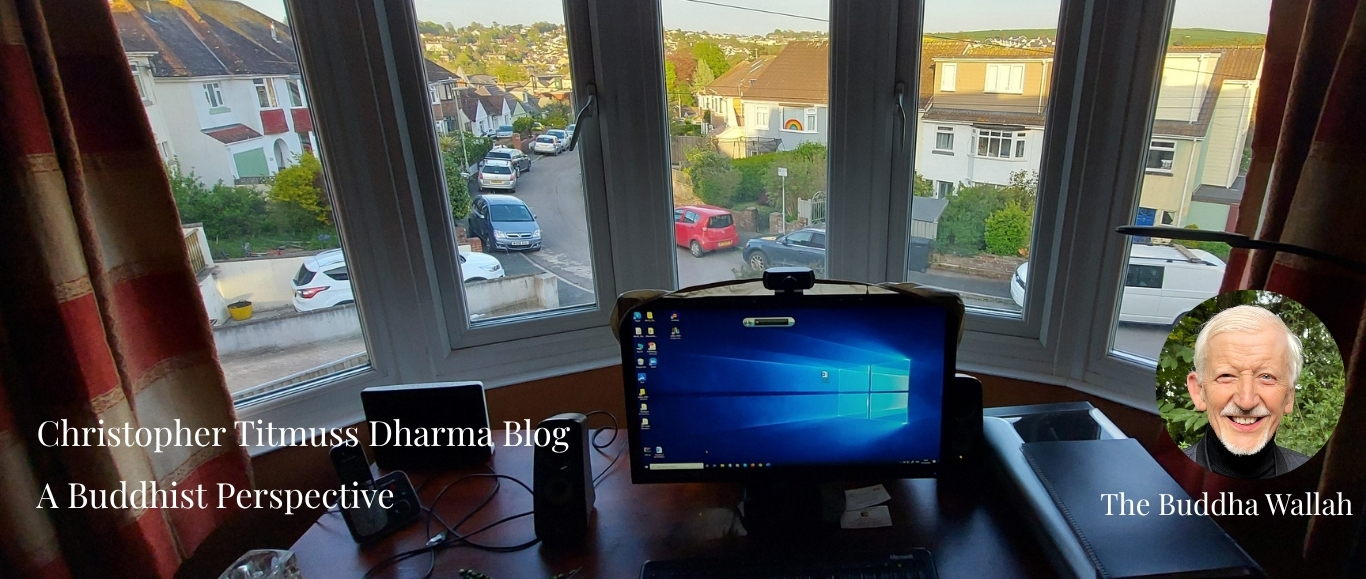I spent three years (1970-`1973) in a Vipassana (Insight Meditation) monastery, Wat Chai Na, Nakornsridhammaraj, southern Thailand with the day starting at 4 am and finishing around 22.00.
We might think we find two eyes only as organs in the upper part of the face.
The teachings refer to the recognition of the importance of the Eye outside the usual two eyes.
Ajahn Dhammadharo (the teacher) encouraged us to be mindful of the eye of consciousness, seat of consciousness, above the two eyes in the middle of the forehead. He described it as the place where we usually sense our self to be.
He taught that consciousness engages with states of mind, often felt in sensations in the centre of the chest. Thoughts are often felt in the head and close to consciousness.
Via consciousness, we witnessed/meditated on the impact of the state of feelings/thoughts on consciousness and impact of consciousness on feelings/thoughts. In the dynamic of consciousness-states of mind, the self of I and my arose, stayed for a while and passed. The condition of I and my affected consciousness, the state of mind or any presentation in consciousness from the world around. We developed an eye to see all this going on in ourselves and others.
Subject and object, consciousness and content, self and other co-exist. Consciousness/mind/matter depend on each other to establish the world.
There is also the experience of consciousness with mental states/body/content seen as a process unfolding without the presence of I and my.
Consciousness (shorthand is we or I) engages in activities without exception. These activities included the entire day such as the four primary postures, eating/bathroom functions, communication and all the senses. Day in and day out, meditations consisted of experiencing the world as the inter-action of consciousness/awareness/mindfulness and its objects.
Morning, noon and night, the practice in the monastery had a single purpose to experience clarity around what unfolded, realise insights towards seeing and knowing awakening.
Applications of the Eye
We use the language of eye as fact, namely two eyes on the face, but eye has an important metaphorical application in the language of seeing.
Quality of seeing with the physical eyes usually changes over decades, such as wearing glasses for general or specific use.
The other eyes of a human being offer much to see with a greater outreach than the physical eyes.
Seven Eyes to See
- Two Eyes above the nose enable seeing. These eyes show an exceptional capacity to see far into the night sky and look at a tiny detail in the world of matter/energy. There is a threefold process of the seer (consciousness with I and my), the eye, as the organ for seeing, and the seen. Practice includes development of the eyes and restraint of the use of these eyes.
- Eye of Consciousness. In the yogi tradition, yogis refer to this as the Third Eye. Third Eye includes seeing clearly, intuitions and realisations.
- Divine Eye. Heavenly eye. (dibba- cakkhu). Seeing deeply through purity of perception The eye of beautiful experiences, a profound happiness, a depth of wonder, a sublime love and much more. Heavenly eye also sees clearly, the mind of others and one lives with eyes of affection, eyes of kindness.
- Eye of Wisdom. To see and know/understand clearly. (jānāti passata). Eyes to See. Having eyes to see, one is gifted with clarity, wisdom and vision. (virajaṁ vitamalaṁ dh-cakkhuṁ uppajjati Vin.i.16). Wisdom knows what is possible and what is impossible.
- Eye of Truth. Liberation. Unbound. Not trapped in consciousness and its content not needing to get beyond consciousness and its content. Eye of truth also leads to complete liberation.
- Eye of Dharma (dhamma-cakkhu). To apply the Dharma to all experiences, situations (often summarised as the Threefold Training (ethics/samadhi (meditative concentration-unification of mind) and a liberating wisdom. The Dharma Eye becomes dust free and comes to vision.
- Eye of the Buddha. The profound seeing of the awakened mind into suffering, its causes, its utter resolution (Nirvana) and the way. The eye of awakening responds to the resolution of suffering. This is the Eye of the Buddha.
MAY ALL BEINGS SEE CLEARLY WHAT UNFOLDS
MAY ALL BEINGS HAVE EYES TO SEE
MAY ALL BEING SEE AND KNOW WHAT WAKING UP MEANS.
Photo shows a gift from Saniye



Great post as always dear Christopher🙏🙏🙏
There’s also “eye of the heart”.